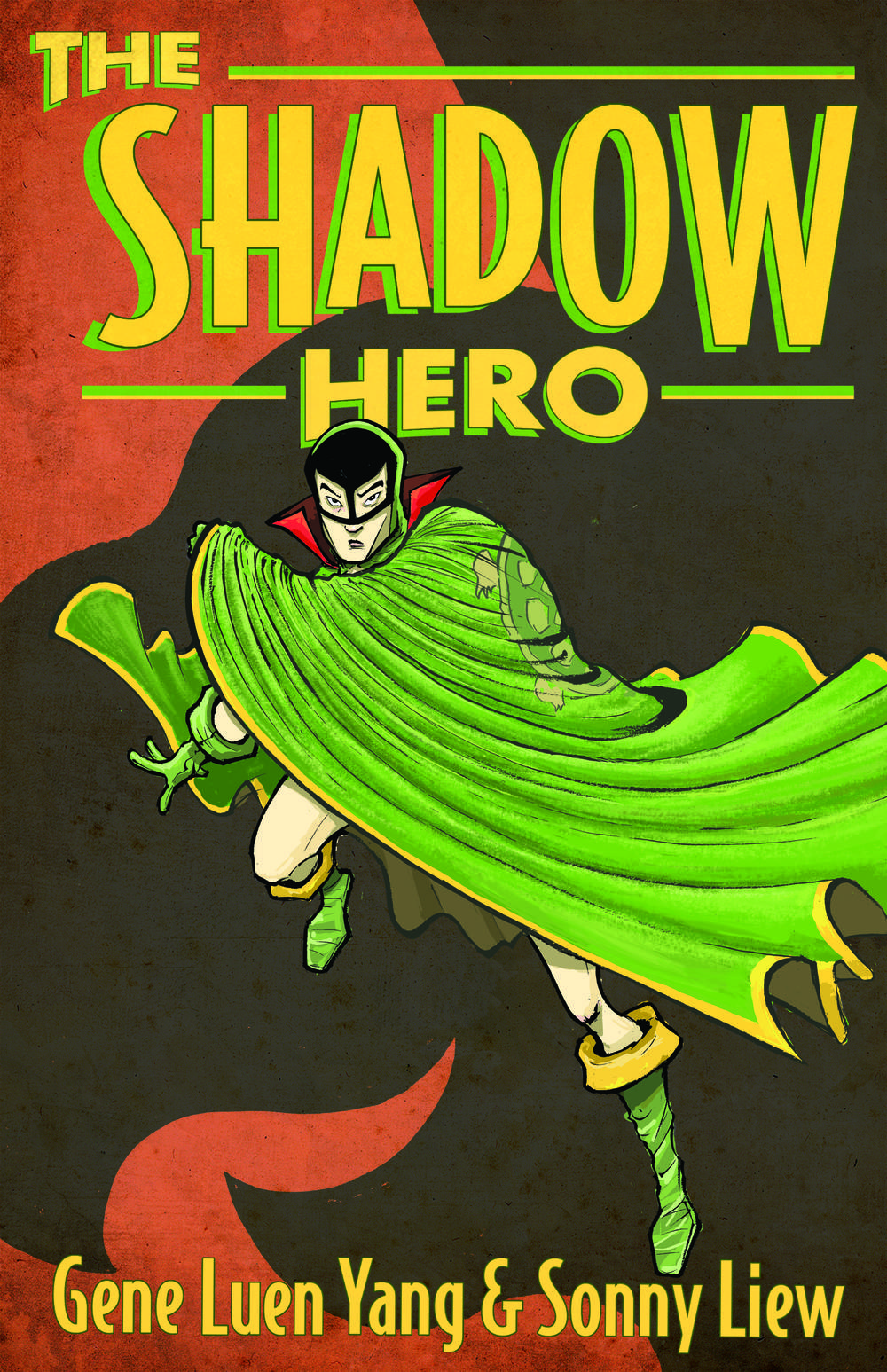 When I was researching an article about graphic novels for pre-teens, I discovered The Shadow Hero. It didn’t meet the requirements for the article, but I was fascinated by it, so I had to read it anyway.
When I was researching an article about graphic novels for pre-teens, I discovered The Shadow Hero. It didn’t meet the requirements for the article, but I was fascinated by it, so I had to read it anyway.
Green Turtle
Somehow, graphic novelist Gene Luen Yang stumbled on the story of an obscure cartoonist from the comics Golden Age named Chu Hing. Hing might have been the first Chinese-American comic artist, and for a brief five issues, he had his own character franchise, the Green Turtle. The comic didn’t make much of an impression. Its story of a masked superhero helping the Chinese resist the Japanese invasion of WWII is largely forgotten today, even by serious otaku.
Among the few who remember the Green Turtle, rumors continue to swirl about story’s creation. The character’s origin story is never revealed in the comic, and his face is never shown. His exposed skin is exaggeratedly pink, and in the first issue a point is made that he speaks English. But the rumors have it that Chu wanted a Chinese hero and was shut down by his publisher. (Why would an English-speaking white guy be dressed as a turtle in WWII China?). In protest, the rumors say, Chu never drew his hero’s face or explained his origin.
A Great American Hero
Now, sixty years later, Yang and his illustrator, Sonny Liew, have finally given the world Chu’s dream – a Chinese-American superhero. The Shadow Hero is the backstory for the Green Turtle, a good boy whose only dream is to take over his father’s grocery store in Chinatown someday.
They do an excellent job of connecting their story, set in a Depression-era Chinatown, to the original character of the Green Turtle. They explain the mysterious turtle-shaped shadow that accompanied the original, and so is the hero’s strangely pink skin. As is often the case, the development of the costume is practically a subplot.
A Rare Superpower
Like the best superheroes, the Green Turtle has vendettas and thwarted dreams; he’s a fully developed character beyond his mask and cape. But he also has something that is rare even in good hero stories – humor. Some of the humor comes from his position as Chinese (“He must be a gwailo, no Chinese would ever dress like that!”). But most of it comes from his mother. She wavers between the ultimate Tiger Mom (exposing him to toxic chemicals in an effort to induce superpowers) and the prototype of the helicopter mother (trying to break up the climactic fight to keep him safe). Her Chinese-ness is relevant to how she is funny, but her concern for her son’s achievement and safety, and her pride in him, are universal and humanizing.
The Shadow Hero walks the very fine line of addressing race with humor and without either offensiveness or preachiness. When the Green Turtle brings down a crook the only honest cop in town couldn’t get on his own, the cop apologizes for using racial slurs against him earlier.
“Honest to God, those words – ” said the cop
“They’re not you,” replied the Green Turtle.
“That’s not true, but they’re not who I want to be.”
Who Needs the Turtle
As the mother of a graphic novel-obsessed Chinese-American daughter, it is tempting to say that my family needs this story. Yang has done us a service by providing a hero who looks like her, providing role models for Asian youth, yadda yadda yadda. But the truth is, our house has always been full of Chinese heroes.
The rest of America needs more Chinese heroes, but my family loves the Shadow Hero because it’s a great story. If its hero eats pork buns instead of hamburgers, well, that’s just fish skin on top.




About the author